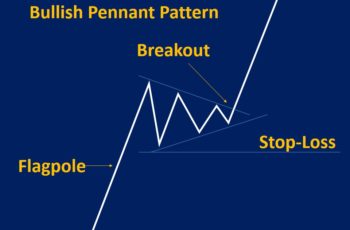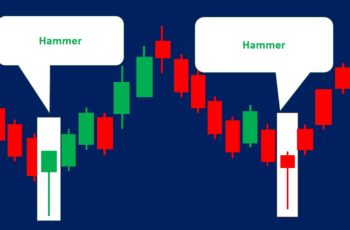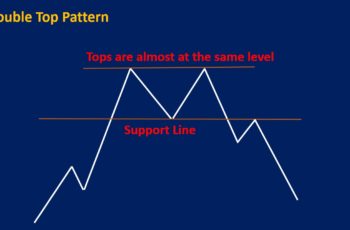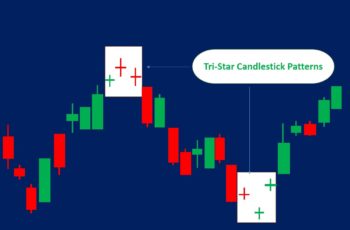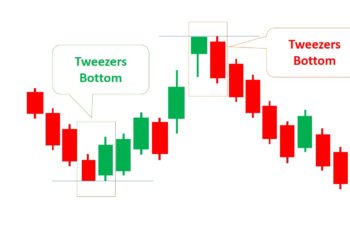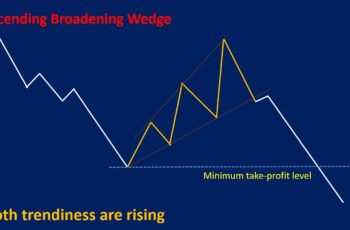A rectangle pattern is a continuation price chart formation in which its support and resistance lines go sideways.
It is one of the most common consolidation structures that appears in any financial asset chart, such as forex and stocks. And in the Elliott Wave Theory it is called regular flat.
While the definition indicates outer lines going horizontally, it is ok if they are slightly tilted.
A rectangle shows a longer pause in the current direction than flags. During this period, bulls and bears have almost the same power. If the trend side wins the battle, the rectangle is completed and will continue in the same direction as before the rectangle.
There are two types of rectangles: bullish and bearish.
First, a bullish rectangle appears in the middle of an uptrend and suggests the continuation of the uptrend.
It starts in an uptrend when the bears start counterattacks and bulls continue attacking, making the chart go sideways or slightly sloping.
A bullish rectangle only completes if bulls defeat bears and push the price above the resistance line of the formation.
So, you have to wait till the price breaks the upper line of the structure because it can be a double top or triple top pattern.
Second, a bearish rectangle is the mirror image of the bullish rectangle pattern.
This pattern appears in the middle of a downtrend. And this formation completes only if one tall candle or multiple smaller candles are closed below the support line.
Before selling the stock or the forex pair, a trader should wait for closing below the resistance line because this pattern can turn out to be a double bottom or triple bottom pattern.
Entry Points of Rectangle Patterns
A rectangle pattern can have a short or tall height.
First, if it has a short height, a trader should wait for a breakout above the bullish rectangle and below the bearish rectangle. And trading inside this type of rectangles doe not make sense.
Put a stop-loss below the support line of the bullish rectangle, and above the resistance line of the bearish rectangles that have short heights. And, your take-profit should be at least twice of risk or adjust as new formations appear.
Second, if the structure’s height is tall, an investor may be able to buy inside if found other charts and candlestick patterns. In this case, the take-profit order should be based on smaller chart formations.
Moreover, tall rectangles do not often travel a lot. So, trading smaller patterns are better.
General Features of Rectangle Patterns
Some features help investors to analyze better and make high-quality decisions. And rectangle patterns have them.
Some of them are the followings:
- The length of a rectangle does matter. A longer rectangle projects more movements after the pattern breakout, and vice versa.
- As the increases, the reward-reward ratio decreases.
- Breakouts should accompany by more volumes (large candles). Often, technical indicators such as MACD and RSI also move with breakouts.
- False breakouts often happen. Generally, low-volume (small candles) accompany them. So, suspect any breakouts that there is no power behind the candlesticks.
- Pullbacks are more likely when the rectangle’s height is short.
Rectangle Pattern Examples
I have brought you a few examples from both bullish and bearish rectangles.
Example #1: Bullish Rectangle Pattern
The AUDJPY forex pair made a bullish rectangle from early January to early February 2021. This pattern had an small downward slope. But it can be categorized as a rectangle. Ignore a little slope in rectangle formations.
A double top pattern challenged the uptrend and started the rectangle.
The first signal that triggered the end of the rectangle was the continuation of inverse head and shoulders (inside the yellow square). And then, it continued rising.
Aggressive traders could buy at B and place their stop-loss at A. As new flag patterns formed he could adjust his top loss or take profit in the middle of the trend.
Example #2: Bullish Rectangle Pattern
Here is another bullish rectangle example from the stock market.
Candlesticks are extremely helpful in the stock market because they form in this market more frequently.
The uptrend in the MasterCard chart that started in March showed signs of weakness by small candles in early June. Remember that small candles imply that bulls and bears fight. And this uptrend is topped with a spinning top candlestick pattern.
This bearish rectangle pattern had slightly a downward slope. It could be a triangle pattern if the slope was more. Because it has a slight slope we recognize it as a rectangle.
Finally, a large candle broke the resistance line and made a flag as a pullback. The trend continued rising. In the middle, it made a pennant pattern and finished with a dark cloud cover candlestick pattern.
This pattern was clear. Buying after a breakout or above the flag was a good opportunity.
Example #3: Bearish Rectangle Pattern
In the weekly chart, the AUDJPY made a bearish rectangle pattern.
This structure formed after the trend reversed from an uptrend to a downtrend with a v-shaped pattern. And this reversal was strongly confirmed by large red candles.
From the last upper point of the pattern, the price fell fast. So, selling was an opportunity.
Differences Between a Rectangle Pattern and a Flag
Rectangles and flags are continuation patterns.
However, they are not the same.
And two features differentiate them:
- A rectangle’s height is tall, and enough to make small trades. On the other hand, a flag is a small formation that forms during a sharp trend, and its fluctuation is short.
- A rectangle moves sideways, while a flag can tilt a little against the prevailing trend or go sideways.
- A long time-frame horizontal flag (ex: weekly) chat pattern is a rectangle in short time-frames such as a daily chart. And a short time-frame rectangles chart pattern is a flag in a longer time frame.
Final Words
Rectangles are continuation patterns. However, traders should wait for a breakout because they turn out to be a reversal pattern, such as a triple top or triple bottom pattern.
While the definition indicates horizontal upper and lower lines, it is ok if they are inclined somehow.

